Working out the pricing and payment options for a membership site can be very difficult.
Not only do you have to determine the value of your program while also taking into consideration how much compensation you deserve for creating and managing your site, but you also have to consider how much your audience will be willing to pay for access.
Not only that, but you need to decide on things like whether your membership site should have yearly or monthly fees.
As we’ve already published a series on how to price memberships, this article will focus on helping you decide whether your membership site should have yearly or monthly fees.
Both options have their pros and cons, and, as this article will cover, there’s lots to consider before deciding on a pricing model for your membership site.
So let’s get started…
Is Your Marketing Good Enough?
As yearly fees will be higher than monthly fees, they can be a tougher sell. So one question you need to ask yourself if you’re considering offering a yearly payment option is whether you can sell a year’s worth of access up front.
If your membership site is new, or you don’t have an existing following or reputation in your space, then it might be difficult to convince your visitors to pay the equivalent of a year’s worth of monthly fees upfront.
Thankfully, there’s lots you can do to make your website look more professional and trustworthy to help overcome this. Ensuring your site has a high-quality design, publishing testimonials, and sharing your backstory can all help persuade your visitors that your product is worth investing in. Having a money-back guarantee in place can help too.
Also, by making sure your marketing materials are well optimized for your target audience can help you close the deal. Be sure to really sell the benefits of your membership program on your website, rather than just listing the features. However, if your program does include lots of content as well as different types of content, such as videos and quizzes, then be sure to mention this on your membership site landing page.
Adding a free-to-access blog to your membership site can help with your marketing as well as benefiting your website in other ways. When it comes to increasing sign-ups, a blog can be a place where you share some of your best content, giving you an opportunity to demonstrate your expertise and credibility to show that paying a yearly fee upfront for access to your premium content is a good investment.
If after giving your website and membership program an unbiased evaluation you can honestly state that your site’s marketing and presentation is up to scratch, then charging a yearly fee could be a viable option for your project.
However, either way, there’s still more to consider when deciding whether to offer yearly or monthly fees for your membership site.
Are You Prepared to Offer a Discount?
If your site isn’t fully optimized for the highest conversions possible, it doesn’t necessarily mean you won’t be able to sell yearly memberships fees.
One way to overcome the marketing issue is to offer price discounts or access upgrades to make your yearly fees more appealing. In fact, your members may be expecting some kind of reward for paying yearly anyway, especially if they’re customers of businesses that routinely offer this type of discount, such as web hosts or cloud storage services.
So, if you consider your equivalent monthly fee to be $20, you could set the yearly price at $200. This represents a saving of $40, or the equivalent of two monthly payments, over the price of one year’s access when paid monthly.
Alternatively, you could include extra content or other perks, like one-to-one email correspondence or access to a priority support service to make the higher ticket value of a yearly fee more attractive.
Can You Keep Providing Value?
The main benefit of yearly fees versus monthly fees is that you get a year’s worth of payment upfront, in one go.
However, as we’ve covered, it can be harder to sell a yearly membership site fee compared to monthly fees. But keeping a monthly subscription active can be difficult too, as when charging monthly fees, your members can cancel at any time during the year (depending on your terms and conditions).
So if you’re leaning towards monthly fees, one important point to consider is that you’re likely to need a large amount of membership content or the ability to provide your members with access to new material on a regular basis in order to achieve a low churn rate on your site.
For example, if someone can sign up, pay the first month’s fees, then access and consume everything you have to offer in that first month, it will be hard for them to justify the expense of paying the recurring fees after the first month or two.
So if you do decide to offer a monthly payment subscription plan, you should ensure that your membership program has enough content to keep your members satisfied for multiple months or you commit to delivering a steady stream of newly released content each month.
One way you can achieve this without actually creating new content each and every month is to stagger or drip the release of content to your members. Good membership plugins like MemberPress make it easy to control and automate what content your members can access when.
By using the sequence dripping feature of MemberPress, you can define when a piece of content on your site becomes available, such as one week or two months for example, after a user joined your program.
Another way you can make charging a monthly fee more palatable to your members is to add interactive elements to your membership site. Including access to a discussion forum or a private Facebook group as part of your membership plans might make your users more willing to continue paying their monthly fees in order to maintain access to these communities. Other options could include weekly or monthly webinars, regular group calls, or other activities that only active members can access.
Final Thoughts
This article on whether your membership site should have yearly or monthly fees has hopefully given you enough information to make a decision on this topic.
As we’ve just seen, there are pros and cons to both approaches. This means, unfortunately, there’s no right or wrong answer as to whether you should charge monthly or yearly fees. In many cases, you’ll want to offer both monthly and yearly subscription options to appeal to the widest audience.
However, even if you do offer both options, the information in this guide should help you decide whether you should promote the yearly or monthly plan as the preferred option on your site.
Don’t forget though, yearly and monthly fees aren’t the only options. You could also consider fixed term memberships, installment plans where the fee is paid off after a set number of payments, or even lifetime memberships with a one-time fee. Then there’s multiple membership pricing tiers to consider too.
It really depends on the type of membership site you’re running, how much and what type of content your members get access to, and what the expectations are in your industry as to what will work best with your project.
Thankfully, membership plugins like MemberPress give you the flexibility you need to try different approaches to find the best payment option for your site.
Will you choose monthly or yearly membership site fees? Let us know in the comments below.













I often see both options available – to choose monthly or yearly. Can that be set up with Memberpress?
Yes, you can set them up as two memberships, one monthly, the other yearly. And the user can choose which to purchase when registering.
Hi,
It is not possible to set up for one membership the option for the customer to purchase monthly or yearly ??? This is really missing in the plugin.
Yes, you would create two Memberships in an upgrade path for that: https://docs.memberpress.com/article/61-creating-groups